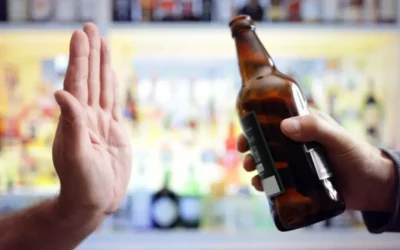The withdrawal response is mild, resembles a sedative withdrawal syndrome with psychotic symptoms. Severe withdrawal symptoms tend to occur in chronic users and can also present with seizures and rhabdomyolysis. Supervised amphetamine withdrawal in a residential or outpatient setting offers the support that many people need to get through these first weeks of sobriety. Clinical professionals may be able to offer interventions for physical symptoms, such as medications to treat nausea, and a variety of therapies can help ensure you stay motivated and on track with recovery despite the challenges of withdrawal.
What You Need to Know About Meth Withdrawal
Modafinil reduces amphetamine preference and prevents anxiety-like symptoms during drug withdrawal in young rats … – ScienceDirect.com
Modafinil reduces amphetamine preference and prevents anxiety-like symptoms during drug withdrawal in young rats ….
Posted: Fri, 18 Jan 2019 23:56:03 GMT [source]
Amphetamine detoxification refers to a natural process and a type of treatment program recommended for people who are physically dependent on a prescription stimulant. Unlike other drugs with complicated withdrawal syndromes, such as alcohol and benzodiazepines, withdrawing from amphetamines is unlikely to trigger any serious medical problems. Adderal withdrawal symptoms often appear a few days after the last dose. Adderall withdrawal typically lasts from three days to several weeks, but you may have lingering psychological symptoms and cravings. One recent study found that changes in brain chemistry during amphetamine withdrawal might make people more sensitive to stress.
Adderall Withdrawal Warnings
By Jaime R. Herndon, MS, MPHHerndon is a freelance health/medical writer with a graduate certificate in science writing from Johns Hopkins University. During Adderall withdrawal, the brain produces stress hormones, leading to a heightened stress response. how long do amphetamines stay in your system This is why someone going through withdrawal might be extra sensitive to everyday stressors. Most people who take it as directed don’t have any issues when they quit. But if you use it too often or too much, you may notice effects when you stop.
History and Physical
News reports suggest that many people affected by the shortage experienced a variety of withdrawal symptoms. Once you break through these ill effects in detox, you enter rehab for lengthier treatment of your https://ecosoberhouse.com/ addiction’s root causes. D. Incomplete outcome data were considered for all outcomes except for discontinuation rates. Studies were considered at low risk of bias if they adequately addressed missing data.
Gillin 1994 published data only
It works by binding to and blocking opioid receptors in the brain, which reduces opioid cravings and prevents the euphoric and sedative effects of opioids. During this waiting period, patients are at high risk of returning to opioid use or discontinuing treatment. After about a month of remaining clean of amphetamines, many people begin to be mostly free of most withdrawal symptoms. With a few months, they also tend to be able to sleep normally again and have a more consistent mood. However, occasional withdrawal symptoms can crop up from time to time, and cravings for the drug can reappear at any time throughout the rest of life.
Following brief exposure to the treatment, the medication is discontinued regardless of response as there is no evidence to suggest a pharmacotherapy for amphetamine withdrawal would have efficacy for amphetamine abuse or dependence. The longer someone takes meth, and the higher the dosage, the more severely dependent on the drug they are likely to be. Withdrawal symptoms are optimally managed through a medical detox regime like that provided in a comprehensive treatment program.
Signs of Adderall Withdrawal
- Regarding cognitive function in the CPT-II, there were differences between the groups in the perseveration of CPT-II.
- Supervised amphetamine withdrawal in a residential or outpatient setting offers the support that many people need to get through these first weeks of sobriety.
- During a methamphetamine detox, some people may benefit from the support of family, friends, or partners.
- The heterogeneity between primary studies was described and, due to the heterogeneity that was observed, a meta-analysis was not conducted.
- Morabbi et al.7 compared pexacerfont with placebo for the treatment of withdrawal symptoms in men with heroin and/or methamphetamine dependence.
Comparison 1 Any pharmacological treatment versus Placebo, Outcome 4 Average score in craving. As high attrition rate would affect the study results, the studies with the attrition rate of 50% or higher of the total participants were excluded. Data were extracted independently by the authors onto data extraction forms. Again, if disputes arose, these were resolved either by discussion between the two reviewers or the correspondence author of the paper. For this update of the review, one author (UK) inspected the search hits by reading titles and abstracts. Each potentially relevant study located in the search was obtained in full text and assessed for inclusion independently by two authors (SS & UK).

Autonomic and psychomotor dysfunction often characterize the withdrawal symptoms. The symptoms tend to develop 2 to 10 days after discontinuation of the agent. Gamma Hydroxybutyrate (GHB) is now a common club drug abused at nightclubs and all-night parties.

Amphetamine Withdrawal Medications
People use all sorts of things as a substitute for amphetamines, including other drugs, nicotine, gambling, shopping, and sex. You start feeling amphetamine withdrawal symptoms when you reach addiction. Moreover, your brain relies on having amphetamines in your system at this point to function properly. However, the way out of these ill symptoms is through a quality detox and rehab treatment program. Two studies (Srisurapanont 1999b; Jittiwutikan 1997) administered 300 mg of amineptine per day, given orally in two 100 mg capsules after breakfast and one 100 mg capsule after lunch.





